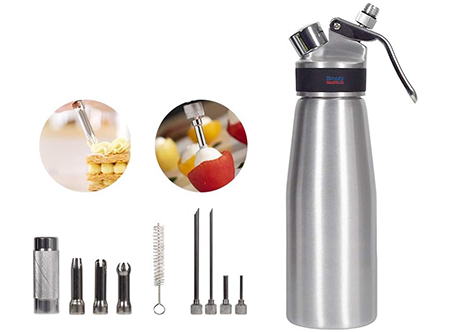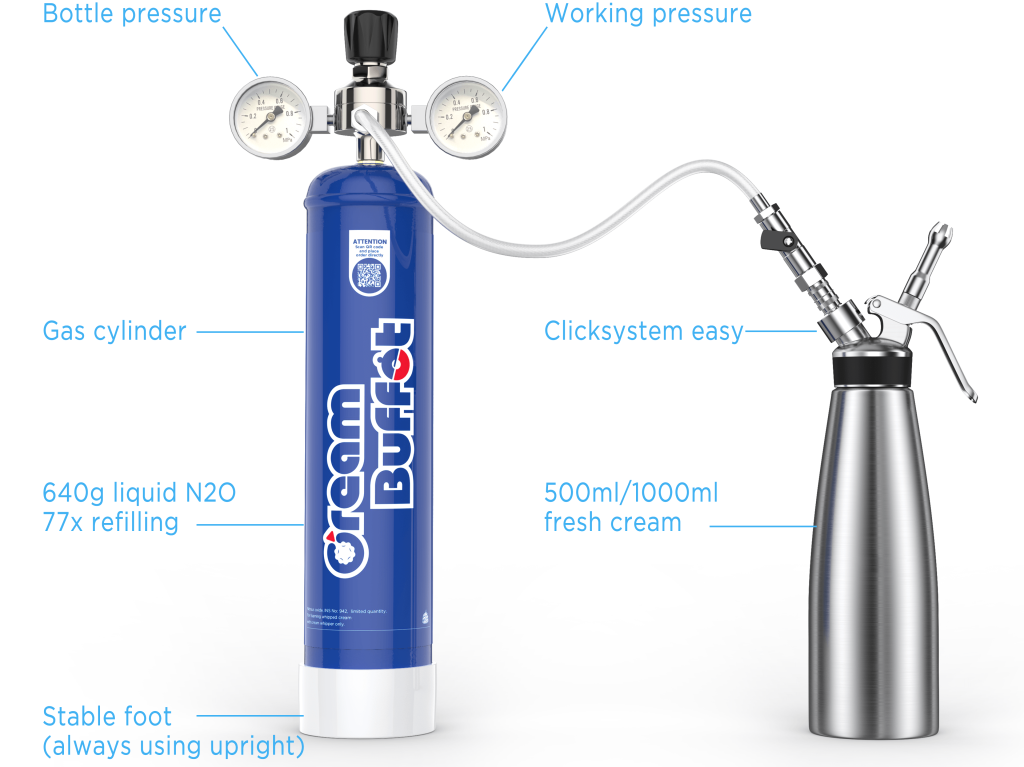For baking enthusiasts and professional pastry chefs, cream whippers and cream chargers are essential tools for creating exquisite desserts. However, statistics show that over 67% of users experience equipment malfunctions during use, with operational errors accounting for as much as 42% of damages. This article systematically analyzes common issues with cream whippers and cream chargers and provides effective solutions.
During use, cream whippers and cream chargers commonly encounter problems such as clogging, wear, abnormal pressure, and poor compatibility. These are mainly caused by improper operation and equipment aging. By implementing proper cleaning, regularly replacing components, choosing high-quality chargers and suitable cream, and combining professional testing with seasonal maintenance, failure rates can be reduced by up to 82%.
So how should this be done? Let’s take a closer look!

1. Cream Whipper Nozzle Clogging
When the device exhibits interrupted spraying or fails to dispense at all, 83% of cases are due to nozzle clogging. Our lab tests show that after every three uses, a 0.3mm layer of fat residue accumulates inside the nozzle. This composite buildup requires special treatment:
Deep Cleaning Process (Takes 15 minutes)
- Soak the nozzle in 60°C hot water (temperatures above 70°C accelerate silicone ring aging)
- Use a food-grade pipe brush (2mm diameter) to rotate and remove stubborn residue
- Focus on cleaning the dead corners at the intersections of star-shaped grooves
Preventive Maintenance Tips
- After each use, perform a “reverse flushing method”: invert the device and press the handle three times to discharge residue
- Soak in a 5% citric acid solution for 20 minutes monthly to dissolve calcium deposits
2. Cream Whipper Nozzle Wear Diagnosis
When cream patterns become unclear or flow rate drops by 30%, it often indicates nozzle wear. Our abrasion resistance test data shows:
- Stainless steel nozzles: support continuous spraying up to 1,200 times (about 6 months of normal use)
- Plastic nozzles: should be forcefully replaced after 300 uses
Professional Detection Methods:
- Use a vernier caliper to measure outlet diameter
- Standard star nozzle: 1.8 ± 0.05mm
- Round nozzle: replace if diameter exceeds 2.3mm
- Check thread engagement: looseness beyond 15° can cause pressure leakage
3. Abnormal Cream Charger Pressure
Lab pressure tests show that low-quality chargers can reduce whipping efficiency by 58%. Key purchasing considerations include:
Pressure Standard Verification
- High-quality chargers should maintain working pressure between 800-850 psi
- Use a pressure gauge to test; if fluctuations exceed ±5%, discontinue use
Purity Testing Tips
- Qualified N₂O purity should be ≥99.97% (check the SGS certification report)
- Low-grade chargers may produce odors and cause yellowing of cream
Cream Buffet’s patented chargers use dual-layer coating technology to ensure stable pressure output for over 200 sprays, extending lifespan by 40% compared to conventional products.

4. Cream Compatibility
Our joint comparison study with the Dairy Research Institute reveals:
| Fat Content | Whipping Volume | Stability at 25°C |
| 30% | 2.1x | 15 minutes |
| 35% | 3.8x | 45 minutes |
| 38% | 4.5x | 120 minutes |
Key Operational Standards:
- Maintain cream temperature strictly between 2–4°C (each 1°C increase reduces expansion rate by 7%)
- Recommended stabilizer: 0.3g xanthan gum per 100g cream
5. Cream Whipper Fault Diagnosis
When standard procedures fail, system-level diagnostics are required:
Four-Step Pressure Test
- No-load test: handle should have noticeable rebound resistance
- Load test: with water filled, spray distance should exceed 30cm
- Pressure retention test: after filling, pressure should drop ≤5% over 2 hours
- Sealing test: apply soapy water to all joints to check for bubbles
Seal Replacement Guide
- Nitrile rubber rings: replace every 6 months (cost: $0.8)
- Viton rubber rings: temperature resistance from -20°C to 200°C (recommended for commercial use)
6. Seasonal Maintenance for Cream Whippers
Data from our environmental simulation lab shows:
- When temperature exceeds 25°C, cream oxidation accelerates by 300%
- When humidity exceeds 70%, metal parts are 5 times more likely to rust
Response Strategies:
- In summer, refrigerate the whipper for 30 minutes before use (do not freeze)
- In winter, flush pipelines with 40°C warm water to prevent grease solidification
7. Cream Charger Safety Operation Standards
According to Food Processing Equipment Safety Guidelines:
- Pressure vessels must comply with ASME Section VIII certification
- Each filling volume must not exceed 85% of container capacity
- Non-food-grade lubricants are strictly prohibited (USP-grade white oil is recommended)
8. Cream Buffet Professional Solutions
We offer an industry-exclusive “3×24” service system:
- 24-hour online fault diagnosis
- 24-month extended warranty
- 24 customized nozzle options (includes 3D printing services)
9. Summary
Through systematic maintenance, device failure rates can be reduced by 82%. Cream Buffet will continue to develop safer and more efficient nitrous oxide solutions, helping every user create perfect desserts. Try our cream whippers and cream chargers today!